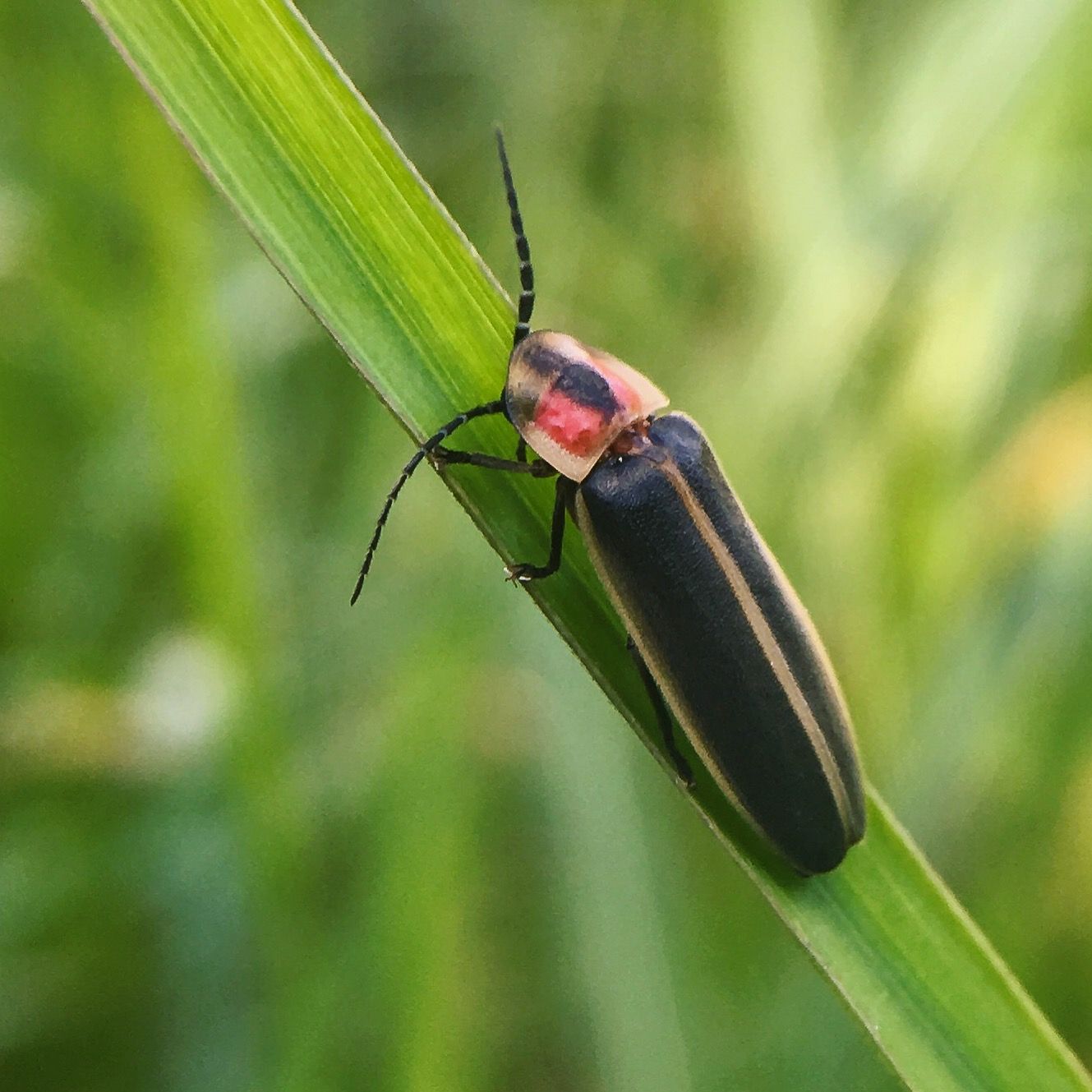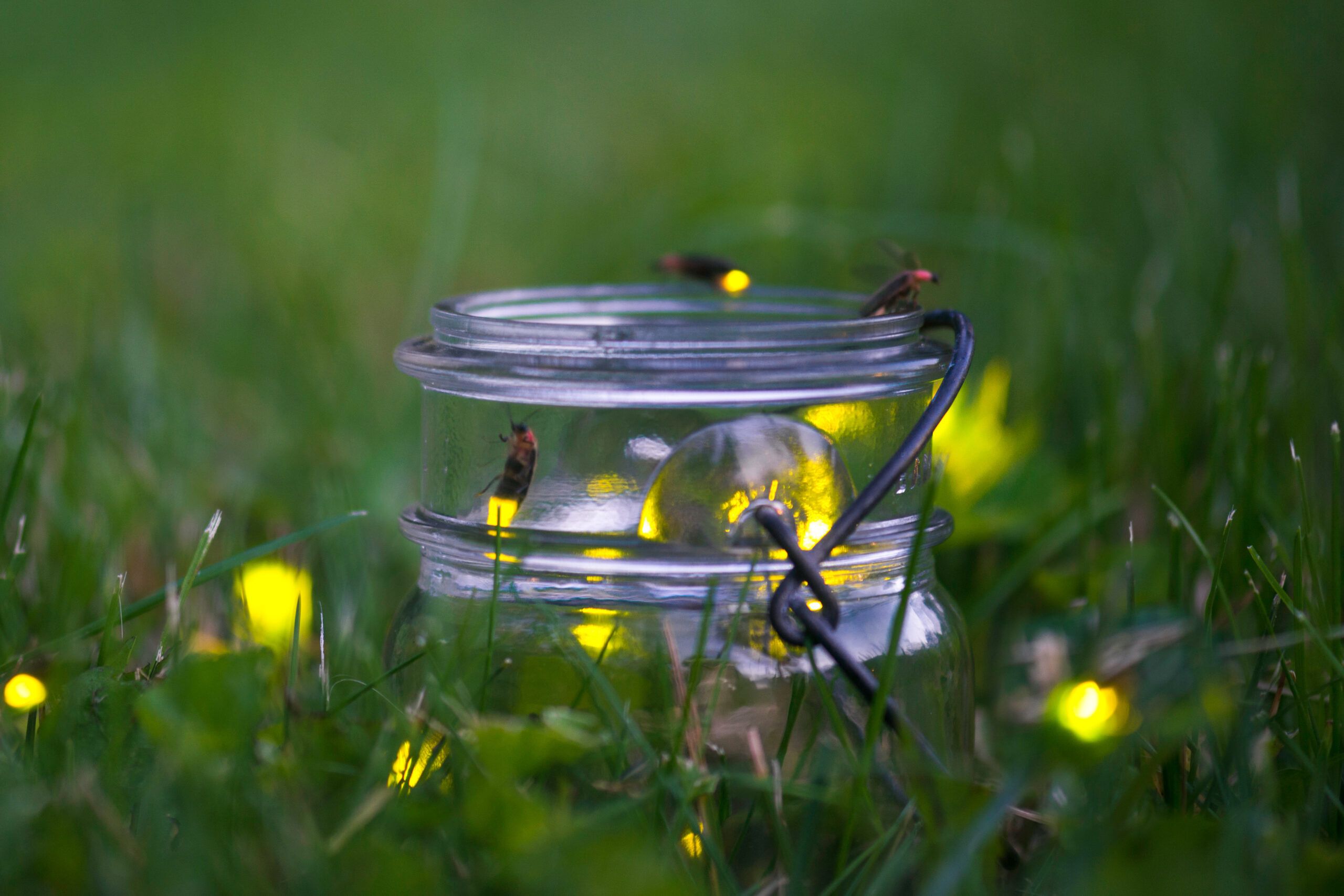Fireflies, also called lightning bugs, are a summer staple for many. However, these beloved creatures have declining populations in many areas. By making your yard a firefly-friendly area, you can attract these bugs and give them a safe habitat.
Understanding Firefly Habitats
To create an inviting space for fireflies, you’ll need to understand their natural habitats and preferences. Fireflies thrive in specific environments that cater to their needs throughout their life cycle.
Types of Fireflies
There are over 150 firefly species in the United States, each with its own environmental needs. Don Salvatore, a former educator at the Museum of Science in Boston for over 30 years, explains the three main types of fireflies:
- Photurinae: Emit short flashes of light.
- Lampyrinae: Produce an extended glow.
- Otetrinae: Use pheromone signals to communicate.
The most common type, found mainly east of the Rocky Mountains, is the Photurinae, which produces the familiar short flashes that many associate with fireflies.
Ideal Environmental Conditions
These are the perfect conditions for fireflies to thrive, mate, and complete their life cycle:
- Abundant in tall grasses and natural vegetation
- Free from pesticides and chemicals
- Moist and humid
- Relatively dark at night
- Rich in organic matter
Assessing Your Yard’s Potential as a Firefly Haven
Before trying to attract fireflies, evaluate your yard’s current state and potential for hosting these luminous insects.
Geographic Considerations
Fireflies are not evenly distributed across the United States. They’re most common in the eastern regions, particularly in areas with warm, humid climates. If you live west of the Rocky Mountains, attracting fireflies may be challenging or even impossible because the conditions aren’t suitable for their natural habitat.
Current Yard Features
Check if your yard has features that may already be attractive to fireflies:
- Absence of chemical pesticides or fertilizers
- Areas of tall grass or wildflowers
- Minimal use of outdoor lighting
- Natural water sources or damp areas
- Wooded sections or dense vegetation
If your yard lacks these features, don’t worry. The following sections will guide you through creating a more firefly-friendly landscape. Even small changes can make a big difference in attracting these charming insects.

Creating a Firefly-Friendly Landscape
Turning your yard into a firefly haven involves providing the right environmental conditions for these insects to thrive.
Cultivate Natural Areas
Ben Pfeiffer, firefly conservationist and founder of Firefly.org, recommends setting aside a portion of your lawn that you only mow once per year. Longer grass provides several benefits:
- Creates insect hotels or bug houses
- Allows fallen leaves and organic debris to accumulate in some areas of your yard
- Offers cover for firefly larvae
- Supports the insects that firefly larvae feed on
- Gives female fireflies better vantage points for spotting mates
Consider designating a section of your yard as a “wildflower meadow” or allowing native plants to grow freely. This not only attracts fireflies, but also supports other beneficial insects and pollinators.
Add Water Features
Fireflies need moisture to survive, so adding water features to your yard can increase its appeal to these insects. Consider incorporating the following:
- Bird baths or other standing water sources
- Small ponds or water gardens
- Shallow depressions that collect rainwater
Even the presence of dew on plants can be enough moisture for fireflies. Having a consistently damp environment will encourage them to make a home in your yard.
Firefly-Attracting Practices
Beyond landscaping, certain practices can make your yard more inviting to fireflies and increase your chances of observing their magical light displays.
Reduce Artificial Lighting
Too much artificial lighting can interfere with firefly communication and mating rituals. It can also be harder for you to spot them. To create a darker, more inviting environment:
- Close curtains or blinds to reduce interior light spillage
- Consider using red or amber bulbs for outdoor lighting, as these colors are less disruptive to lightning bugs
- Turn off exterior lights when not needed
- Use motion-sensor lights instead of constant illumination
Avoid Harmful Chemicals
Pesticides and lawn chemicals can be detrimental to fireflies and their food sources. To maintain a healthy firefly population:
- Allow beneficial insects like slugs and snails to thrive, as they are food sources for firefly larvae
- Avoid using chemical pesticides in your yard
- Opt for organic lawn care methods
Plant a Vegetable Garden
Vegetable gardens are excellent additions to a firefly-friendly yard. Pfeiffer says that tilled and moist garden soil is an ideal place for fireflies to lay eggs. The insects attracted to your garden can also serve as food sources for firefly larvae.
Consider planting various vegetables and herbs, focusing on those that thrive in your local climate. Not only will this benefit fireflies, but it will also provide you with fresh, homegrown produce.
Managing Other Pests Safely
While creating an environment for fireflies, you may encounter other insects that you’d prefer to keep at bay. Luckily, safe methods exist to manage pests without harming fireflies or their habitats.
Natural Mosquito Repellents
Mosquitoes often share the same moist environments that fireflies prefer. To repel mosquitoes without harming fireflies:
- Install bat houses to encourage natural mosquito predators
- Plant natural mosquito-repelling plants like citronella, marigolds, and lavender
- Use citronella candles or torches in outdoor seating areas
These methods can help reduce mosquito populations without resorting to chemical pesticides that could harm fireflies.
Safe Pest Control Methods
When pest control is necessary, use methods that are less likely to impact fireflies and their food sources. Salvatore suggests using mosquito pellets that contain bacteria that specifically target mosquito larvae. Pfeiffer recommends natural garlic-based sprays and citronella oil as safe alternatives to chemical pesticides.
Always research and carefully consider the potential impacts of any pest control method on fireflies and other beneficial insects before use.
Observing and Protecting Fireflies
Once you’ve created a firefly-friendly environment, take time to enjoy the beauty of these fascinating insects.
Best Times for Firefly Viewing
Fireflies are most active during warm, humid evenings in late spring and early summer. To maximize your chances of seeing fireflies:
- Avoid using flashlights or phone screens, which can disrupt firefly communication
- Be patient and allow your eyes to adjust to the darkness
- Choose a dark area of your yard away from artificial lights
- Wait until dusk when fireflies begin their light displays
Remember that different firefly species may have varying active periods, so watch your yard over time to figure out the best viewing times.
Participating in Firefly Conservation Efforts
Joining in firefly conservation extends beyond your yard. Consider participating in citizen science projects like Firefly Watch, which helps researchers track firefly populations.

